Part of the Printworks entertainment venue, these premises are named after one of Manchester’s long-lost inns. The original Seven Stars stood close by. It had a picturesque Tudor-style front and claimed to have been licensed since 1350. The venue is named after the print works which stood on this site. For many years, several daily and weekend newspapers were produced on printing presses which were mounted on a bed hewn out of local red sandstone.
A framed drawing of JM Ludlow, G Holyoake, ET Craig, Robert Owen, Judge Hughes, EV Neale and Chas Kingsley – the seven ‘stars’ of the socialist and co-operative movement.
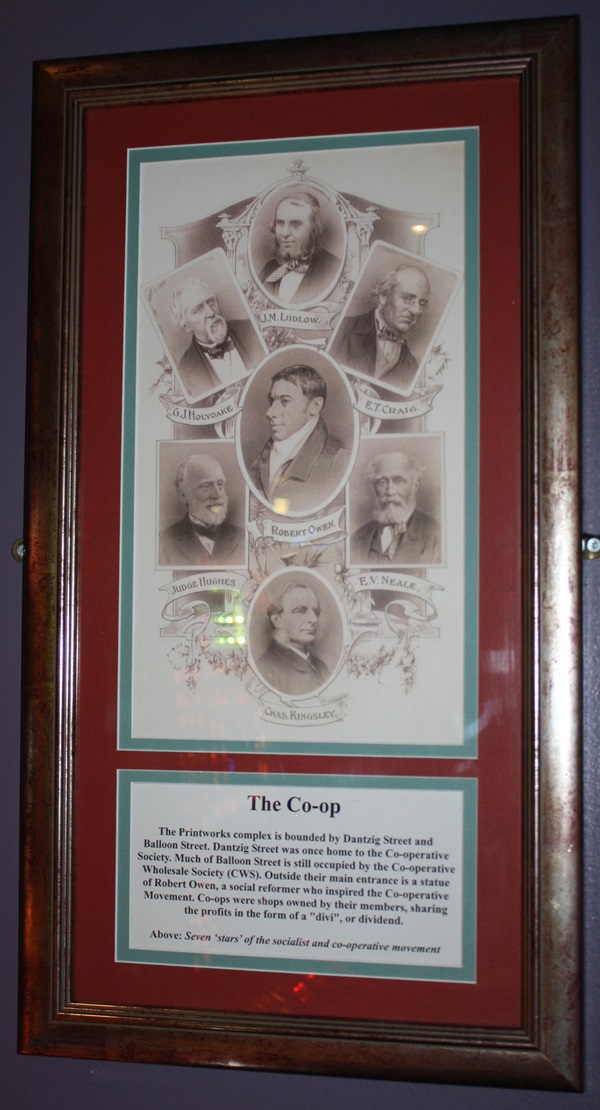
The text reads: The Printworks complex is bounded by Dantzig Street and Balloon Street. Danzig Street was once home to the co-operative society. Much of Balloon Street is still occupied by the Co-Operative Wholesale Society (CWS). Outside their main entrance is a statue of Robert Owen, a social reformer who inspired the Co-operative Movement. Co-ops were shops owned by their members, sharing the profits in the form of a “divi”, or dividend.
Framed photos of the Co-operative.
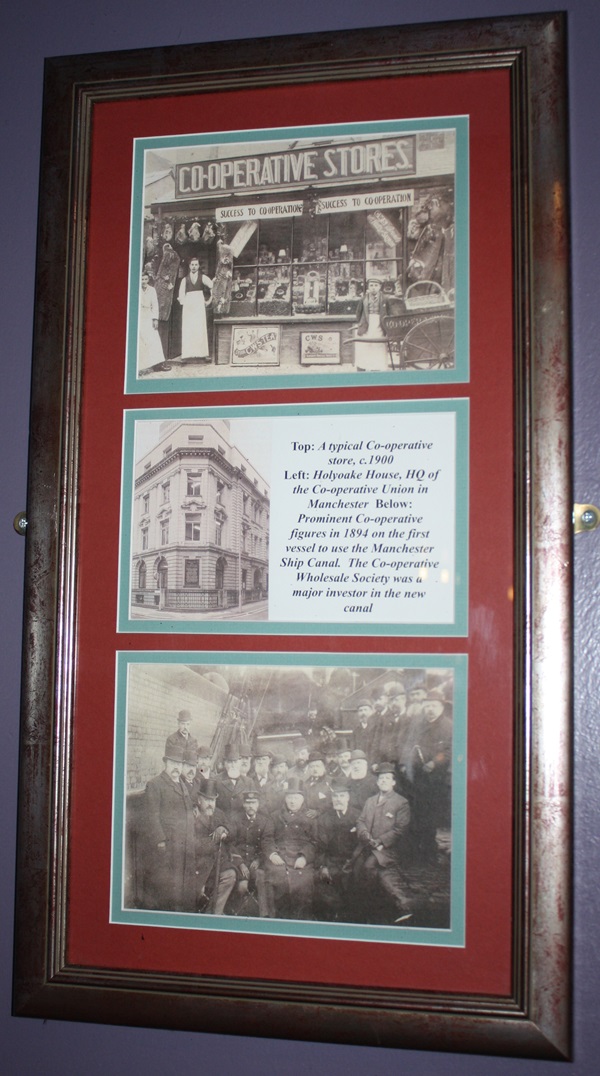
Top: A typical Co-operative store, c.1900
Left: Holyoake House, HQ of Co-operative Union in Manchester
Below: Prominent Co-operative figures in 1894 on the first vessel to use the Manchester Ship canal. The Co-operative Wholesale society was a major investor in the new ship canal in Manchester.
Framed drawings and text about Chetham College.
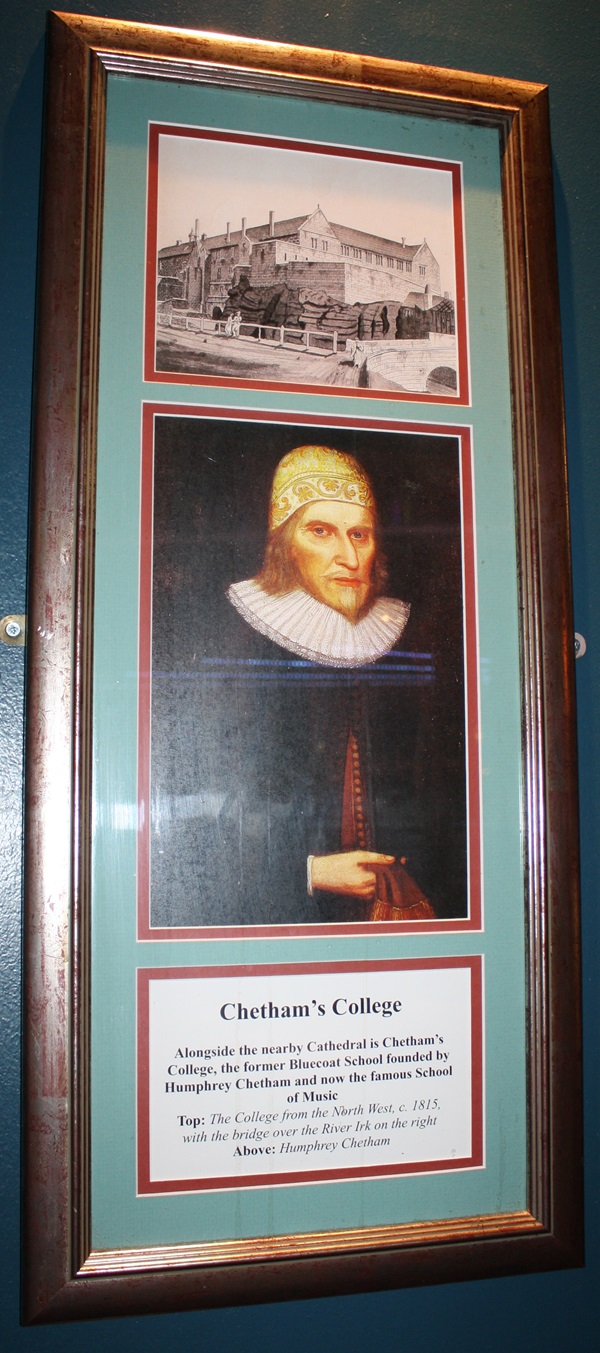
The text reads: Alongside the nearby cathedral is Chetham’s College, the former bluecoat school founded by Humphrey Chetham and now the famous school of music.
Top: The College from the North West, c.1815, with the bridge over the River Irk on the right
Above: Humphrey Chetham.
A framed drawing of the north side of Chetham’s school, with the river Irk in the foreground, 1823.
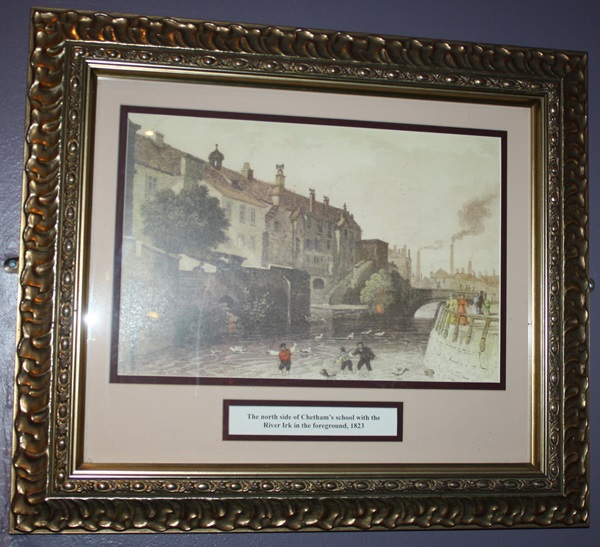
Framed photos of John Crossley, President of the Chetham Society, and Elizabeth Gaskell, the author of Mary Barton.
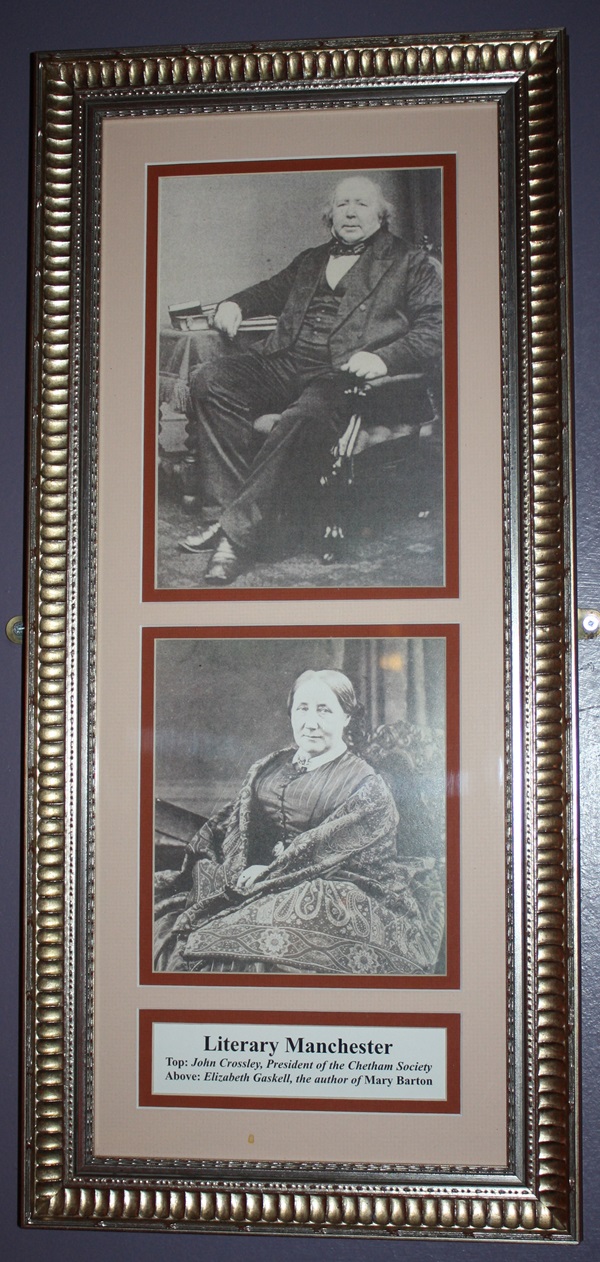
Framed pictures of College Old Gate, the Grammar School and the Chetham Library, 1797.
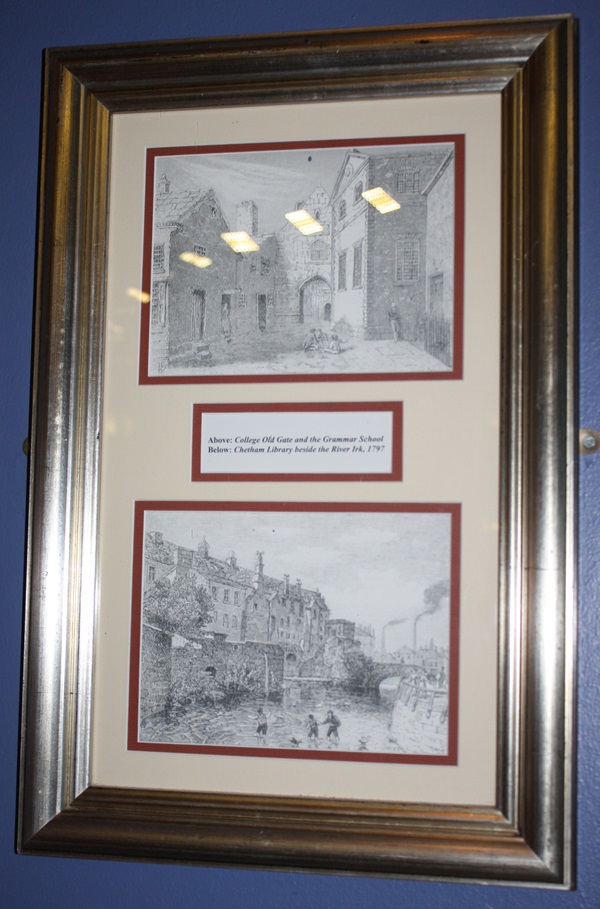
A framed drawing of Hunt’s Bank, 1797.
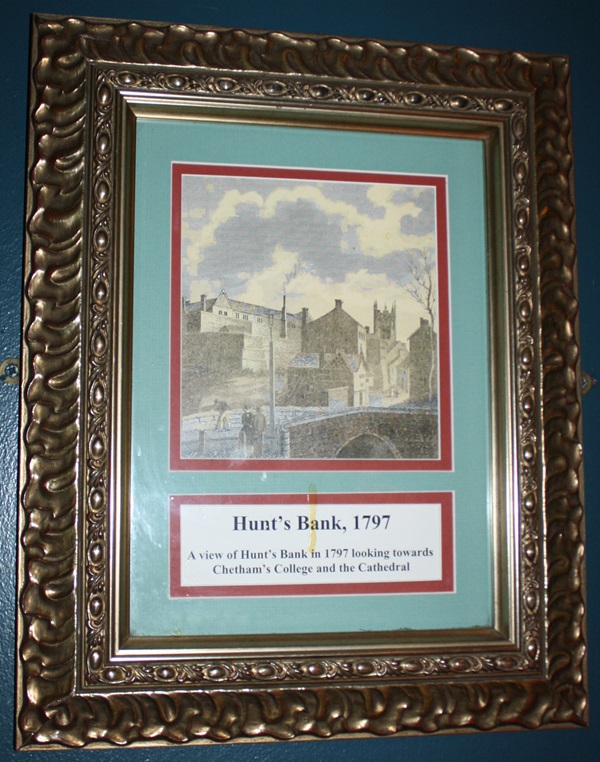
A view of Hunt’s Bank in 1797 looking towards Chetham’s college and cathedral.
Framed pictures of Richard Cobden and John Bright.
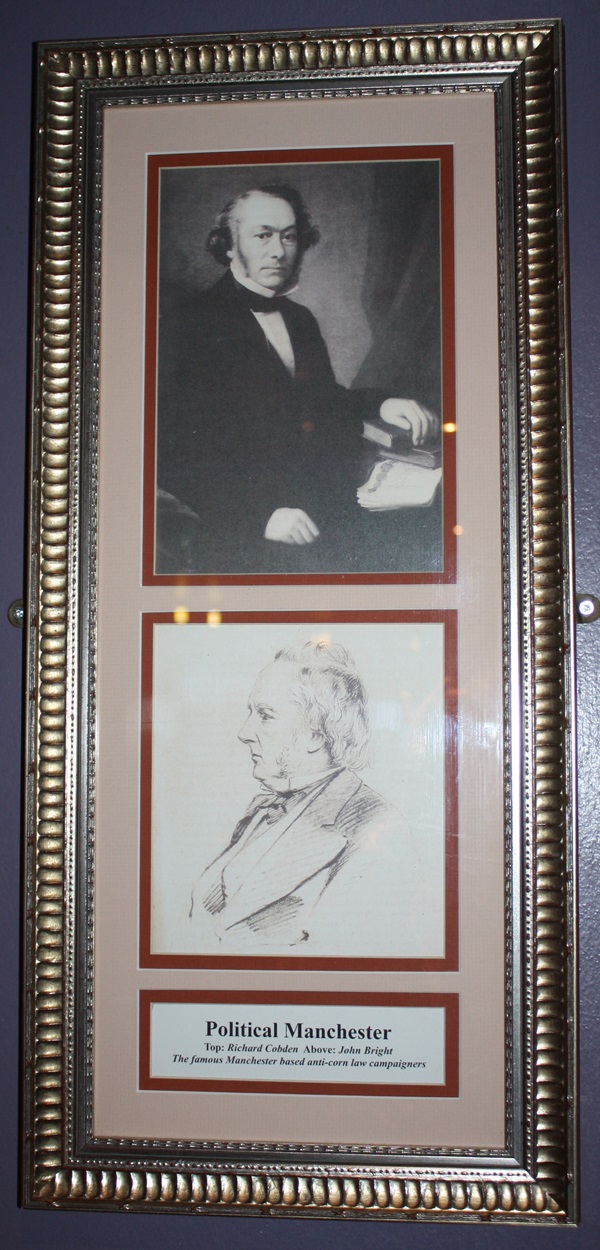
Framed pictures of a Rolls-Royce, testing the first petrol engine in 1903 and the tool room in Cooke Street.
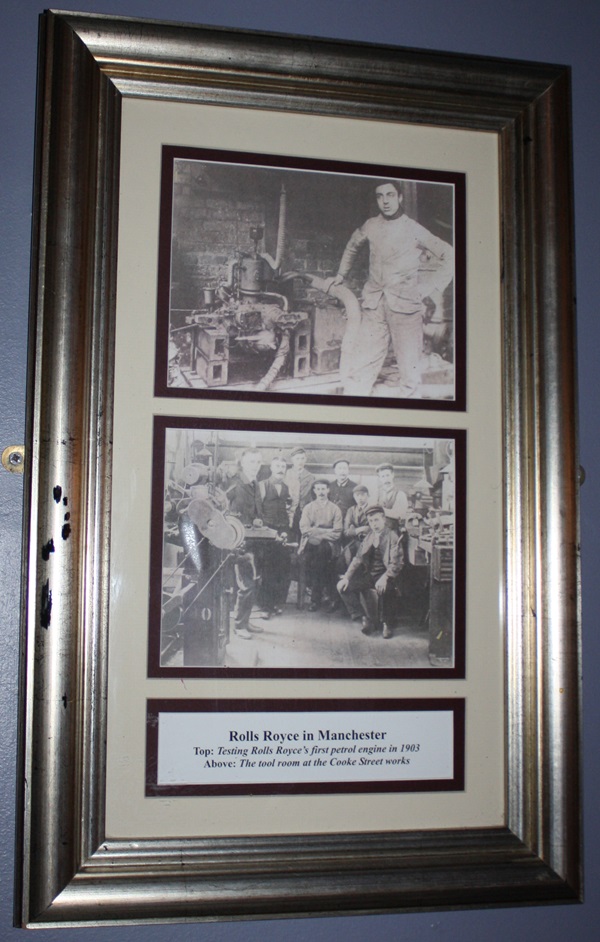
Framed pictures of Royce’s first prototype at the Cooke Street works in Hulme and a production model of 1905.
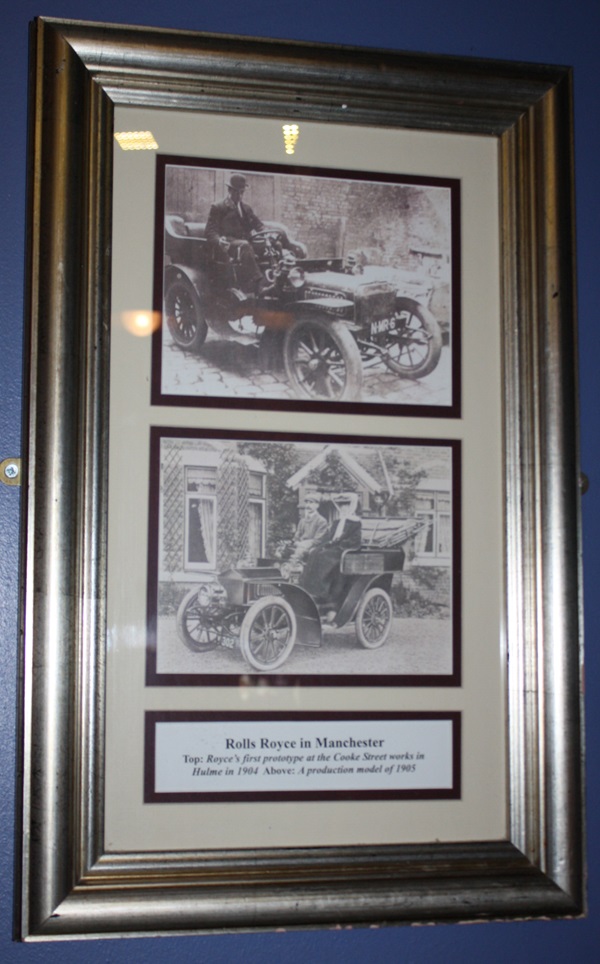
Framed prints and text about Dr William King and Robert Owen.
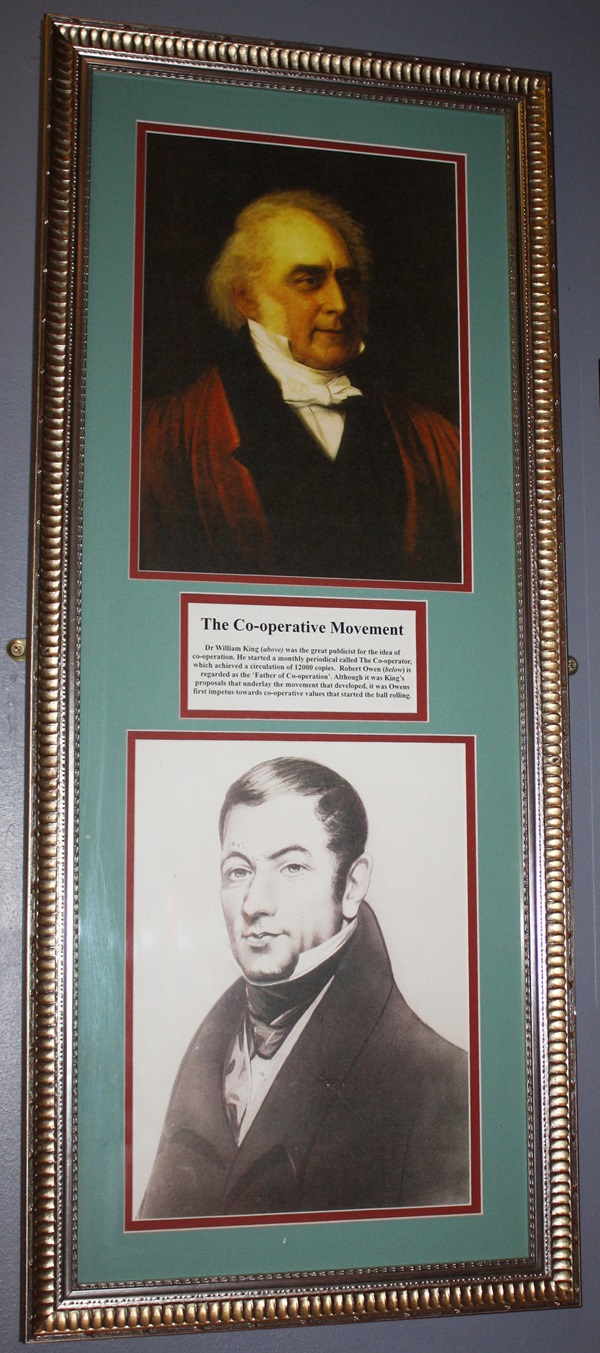
The text reads: Dr William King (above) was the great publicist for the idea of co-operation. He started a monthly periodical called The Co-operator, which achieved a circulation of around 12000 copies. Robert Owen (below) is regarded as the “Father of Co-operation”. Although it was King’s proposals that underlay the movement that developed, it was Owens first impetus towards the co-operative values that started the ball rolling.
Framed drawings and text about David Lloyd George (1863–1945).
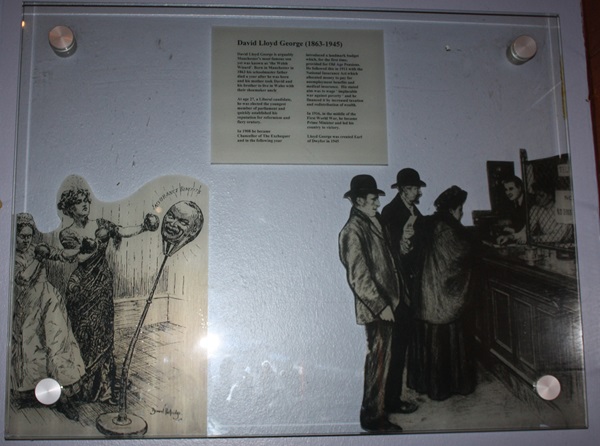
The text reads: David Lloyd George is arguably Manchester’s most famous son yet was known as ‘the welsh wizard’. Born in Manchester in 1863 his schoolmaster father died a year after he was born and his mother took David and his brother to live in Wales with their shoemaker uncle.
At age 27, a liberal candidate, he was elected the youngest member of parliament and quickly established his reputation for reformism and fiery oratory.
In 1908 he became the chancellor of the exchequer and in the following year introduced a landmark budget which, for the first time, provided for Old Age Pensions. He followed this in 1911 with the national insurance act which allocated money to pay for unemployment benefits and medical insurance. His stated aim was to wage ‘implacable war against poverty’ and he financed it by increased taxation and redistribution of wealth.
In 1916, in the middle of the First World War, he became prime minister and led his country to victory.
Lloyd George was created Earl of Dwyfor in 1945.
Framed photographs, drawings and text about Poets’ Corner, Long Millgate.
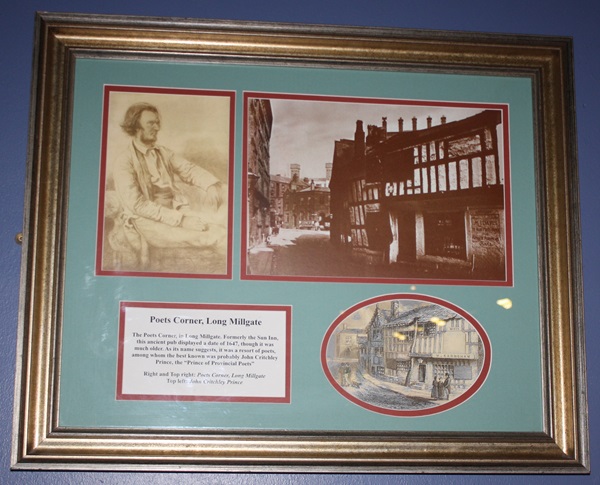
The text reads: The Poets Corner, in Long Millgate. Formerly the Sun Inn, this ancient pub displayed a date of 1647, though it was much older. As its name suggests, it was a resort of poets, among whom the best known was probably John Crithcley Prince, the “Prince of Provincial Poets”.
Right and Top right: Poets Corner, Long Millgate
Top left: Critchley Prince
Framed photographs and text about Charles Halle.
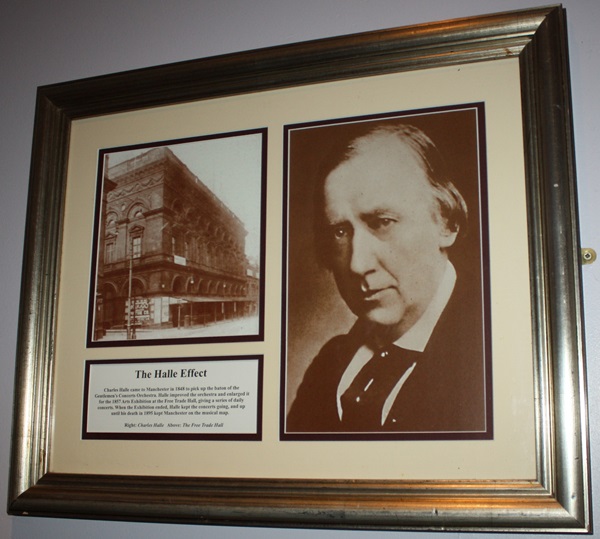
The text reads: Charles Halle came to Manchester in 1848 to pick up the baton of the Gentlemen’s Concerts Orchestra. Halle improved the orchestra and enlarged it for the 1857 arts exhibition at the Free Trade Hall, giving a series of daily concerts. When the exhibition ended, Halle kept the concerts going, and up until his death in 1895 kept Manchester on the musical map.
Right: Charles Halle
Above: The Free Trade Hall
A framed photograph of Market street, c1905.
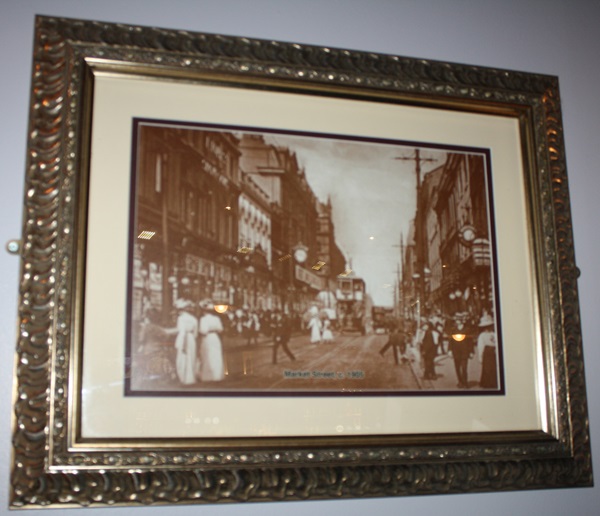
A framed photograph of the Wellington Inn, Market Place, in 1900.
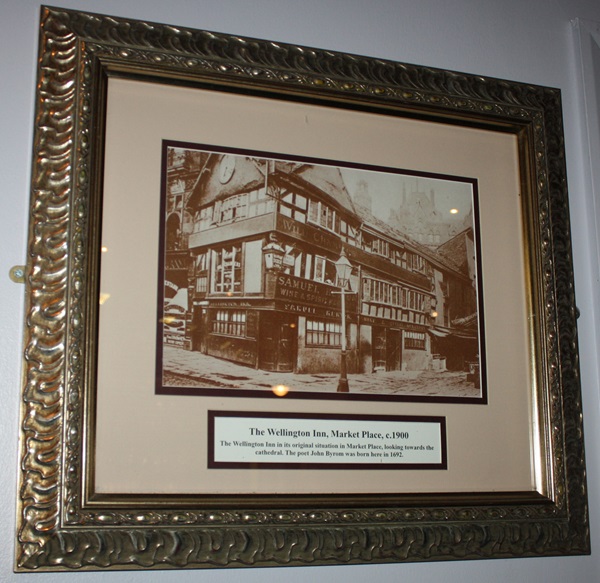
The text reads: The Wellington Inn in its original situation in Market Place, looking towards the cathedral. The poet John Byrom was born here in 1692.
External photograph of the Printworks building.
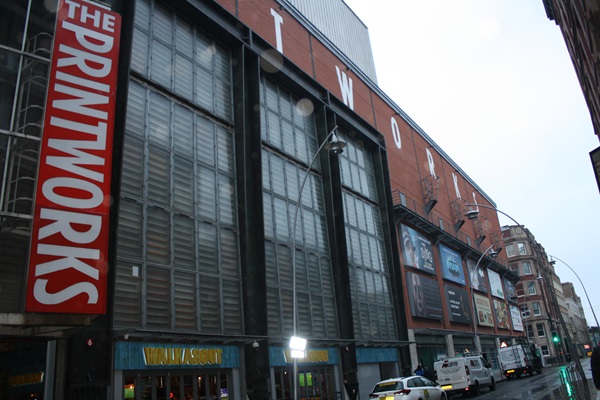
External photograph of the building – main entrance.
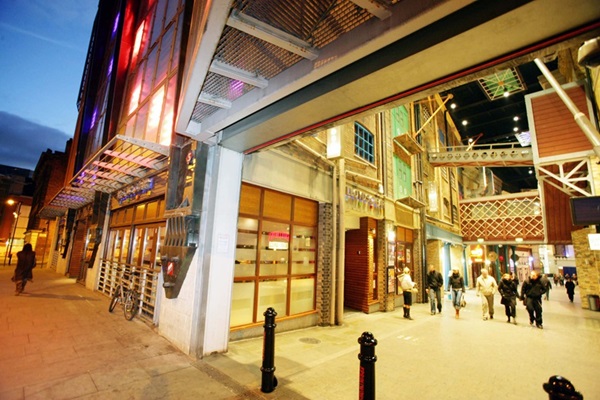
If you have information on the history of this pub, then we’d like you to share it with us. Please e-mail all information to: pubhistories@jdwetherspoon.co.uk